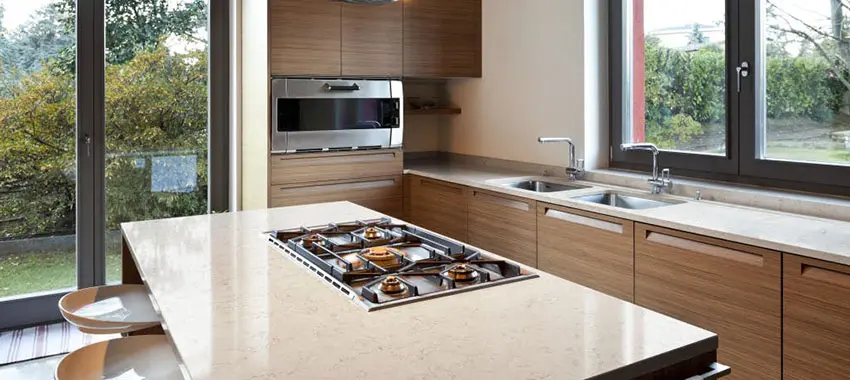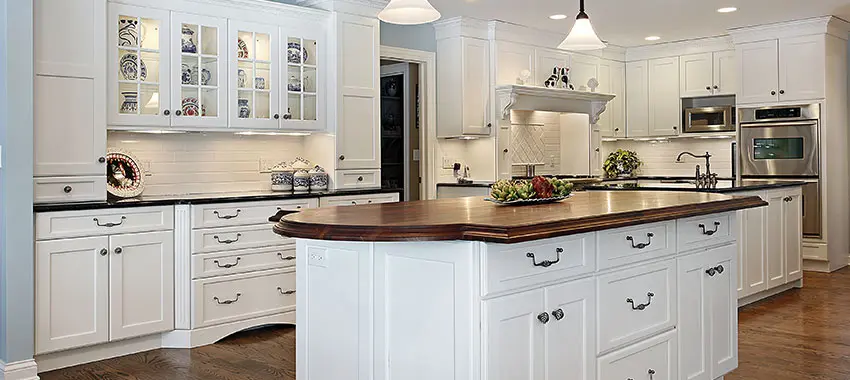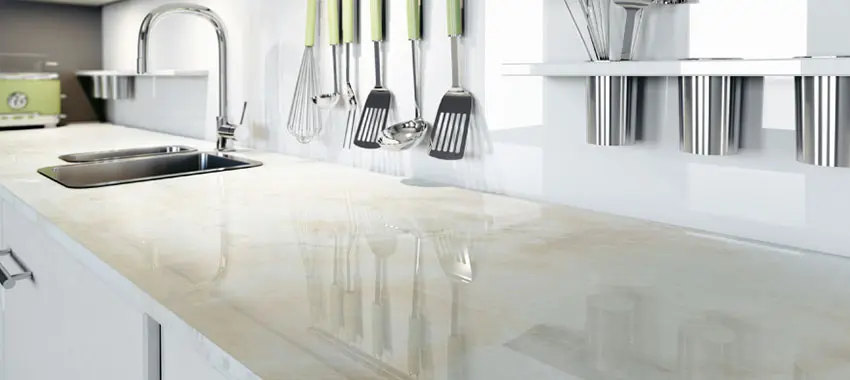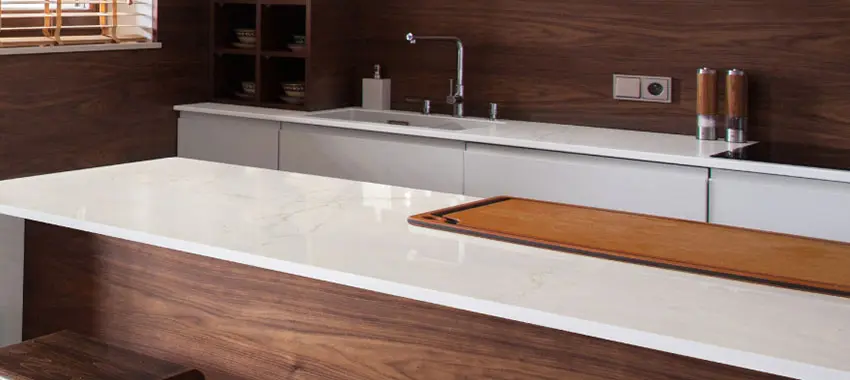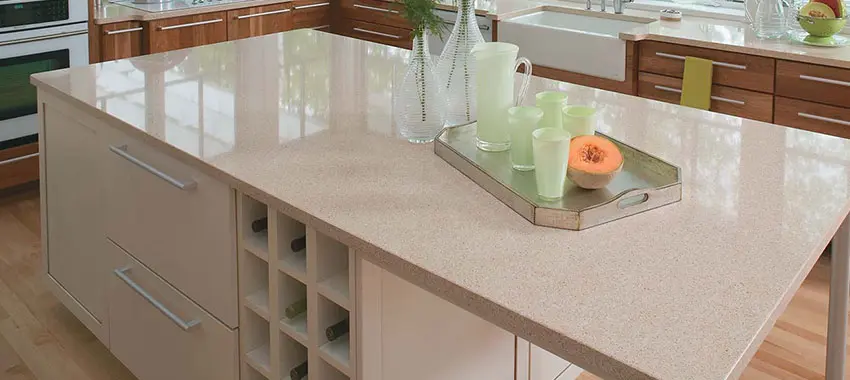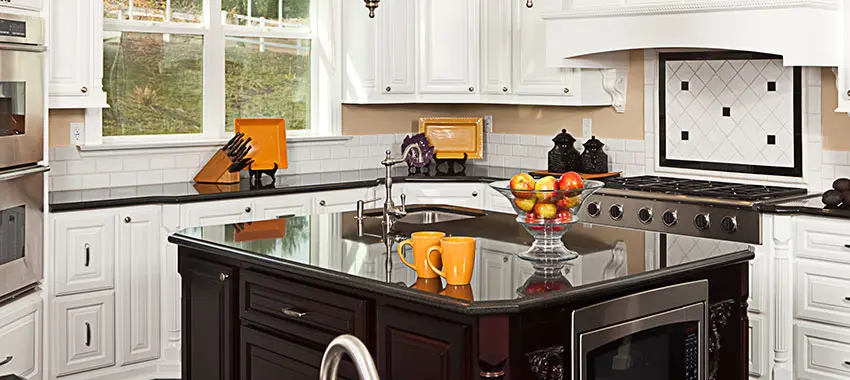Oct
Grades Of Quartz Countertops & How To Examine A Quartz Sample
- 2025
- FlintStoneTops
Quartz is a man-made countertop material and it’s one of the strongest available, offering excellent longevity and strength. However, when buying quartz kitchen countertops, you should learn about different grades of quartz and how to spot a fake or low-quality quartz slab. Here’s a guide.
Different Grades Of Quartz Countertops
Quartz countertops mainly have three grades. Let’s go through them one by one.
First-Choice Quartz
First-choice quartz is also known as high-grade quartz and it is the best grade of quartz out there, albeit very expensive at that. This grade has a very striking color that makes it look high-quality and it has the perfect thickness for kitchen slabs. The material concentration is definitely higher in first-grade quartz, making it heavier and sturdier, however, it also means that it will be a pain to install.
First-grade quartz is also highly scratch-resistant, so you don’t need to keep your knives at bay, because this can take on everything. But it’s not suggested to cut food directly on the surface without a trivet or coaster.
Second-Choice Quartz
This is the perfect middle material to choose from, if you don’t want to go for too expensive or too cheap quartz slabs. Also known as mid-grade quartz, second-choice quartz is stronger than its low-quality counterpart.
Unsurprisingly, it is popular among homeowners, because it’s really affordable, it comes in a lot of colors, and it’s fairly durable. But is it the most durable quartz quality on the planet? No. But that doesn’t mean you can’t get it for yourself. It will last a decent time in the kitchen.
Third-Choice Quartz
Also known as low-grade quartz, this material has more resin than quartz and minerals. This makes the material lightweight and affordable, but it is definitely not as long-lasting or durable as the above two grades.
However, you can still install it in your kitchen. You just need to be really careful that you’re not letting any hot things near it, because the resin will blister and it will lead to heat stains on the countertops, which is not what you want.
How To Check A Quartz Sample?
So now that you know the different grades of quartz countertops, you should learn how to check the quality of quartz as you can’t carry out extreme quartz durability tests. Here is what to look for when examining a quartz sample:
Check The Slab Thickness
The first thing you want to take note of is the slab thickness. Even though quartz comes in a lot of slab sizes, you still want to keep your eyes peeled for any sketchy signs.
So, when you’re looking at a slab, you first want to ensure that it obviously matches your dimensions, but if you want to see whether you’re getting a good quality quartz or not, then you have to check its thickness. The thickness should be uniform from any side. So, check the thickness from the middle and the edges and sides to see if there are variations. If there are, you’re looking at a low-quality quartz slab.
Moreover, the slab should be at least 2cm in thickness. Lesser thickness than that doesn’t necessarily mean the quartz slab is low-quality, but even first-choice quartz would be fragile at a thickness less than 2cm.
The Color Of The Slab
The next thing you want to consider is the color of the quartz slab. By now, you know that good quality quartz has a very potent color too. You don’t want to go for too white slabs because they look fake and may be of bad quality.
You also want to check whether the color and pattern is consistent throughout the slab. If you see any inconsistencies in the slab’s color or random yellow or black spots or pinholes, then you may want to stay away from that because it may be faux quartz or low-quality quartz.
Resin To Mineral Ratio
The next thing you want to check is the resin to mineral ratio. Even though quartz is primarily made out of resin and pulverized minerals, you still have to check how that ratio is running throughout the slab.
Firstly, you want to check if the slab is too yellow or not. If it is too yellow and very hard and brittle, then it has more resin than mineral in it. If it’s the other way around, then it is a good quality material. For reference, quartz slabs are usually 90-95% quartz and other minerals, and 5-10% resin.
The Price Tells A Lot
Quartz countertops, even though they’re man-made, can still run a little expensive, especially if they’re good quality. These countertops are nowhere near considered cheap by any means.
So, if you’re going for a good quality quartz countertop and you want to ensure that you’re not getting duped, then you have to buy it at full price. It might not be something you want to hear, but in the case of quartz, you’re paying for the quality you get. So, even though you might want to go the other way, it won’t be beneficial.
Weight Of The Quartz Slab
Quartz is also quite heavy. It is not a lightweight material by any means. If you pick up a sample of the quartz slab and try to get a feel of the weight, and if it feels slightly heavy, then you’re getting a good quality one. It means that it has the right ratio of mineral and resin.
If the quartz has too much resin in it or if it’s made out of non-quartz materials, then it will be lightweight. So, this is something that you have to keep in mind.
Is The Surface Smooth Or Gritty?
For this, you might need a magnifying glass, or you need to have a really good sense of detail. You want to check the grittiness of quartz. It is something that will save you from getting duped. Sometimes, people will make glass look like quartz and if that is the case, then the surface, especially where the veining is, will be very smooth.
Real, good-quality quartz, on the other hand, will be gritty with a texture. You can easily figure it out with a magnifying glass or by running your fingers over the material. It is a great way to figure out which is the real deal.
Where Is The Slab From?
You want to know the origin of the slab and this doesn’t just mean checking the label, which says where it’s made. These can be pretty misleading and, in all honesty, how hard is it to slap a label on something? So, if you want to ensure that you’re getting good quality quartz, then try to source your material from retailers that are known to source materials from countries that export quartz. This is also a really good tip for natural stone countertops.
Even though quartz is man-made, some countries specialize in manufacturing them. Top countries that export quartz are China, India, USA, Turkey, Brazil, and Norway.
Conclusion
Quartz grades may seem like they are insignificant, but you’ll only know the difference when you get your hands on the good quality stuff. Hire a reputable quartz countertop installer Rockville who can help you navigate through the entire quartz countertop installation process from choosing the quartz quality to the installation.


